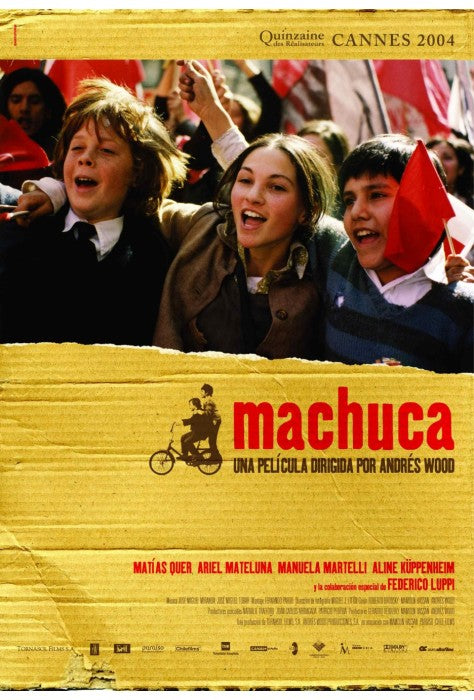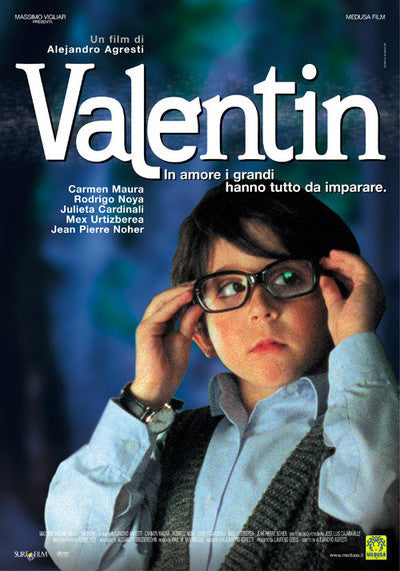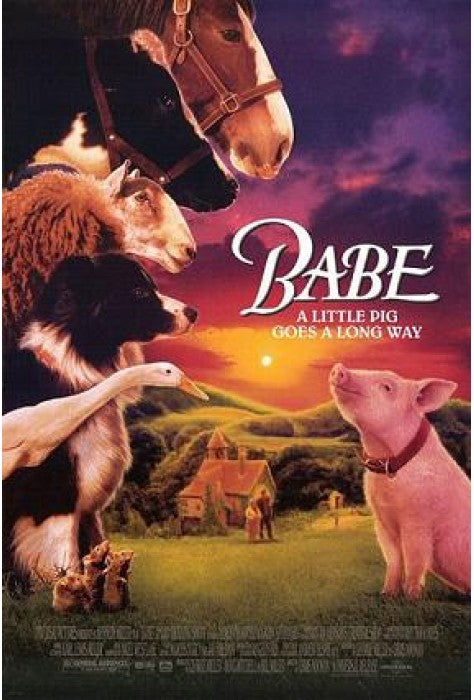The 5 Skills
FilmArobics world language resources are centered on the five fundamental language learning skills of Listening, Speaking, Reading, Writing, and Viewing.

Listening
Listening is foundational to language acquisition, and FilmArobics leverages films to enhance this skill. Students are exposed to authentic accents, intonations, and speech patterns, which help them understand and interpret spoken language in real-world contexts.

Speaking
Speaking fluently and confidently is a primary goal of language learners. FilmArobics fosters speaking skills through interactive activities that encourage students to use new vocabulary and phrases in context.

Reading
Reading skills are developed through exposure to film scripts, subtitles, and related texts. FilmArobics provides materials that help students decode and understand written language, reinforcing vocabulary and grammatical structures introduced in the films.

Writing
Writing exercises in FilmArobics lessons encourage students to express their thoughts coherently and creatively. By connecting writing tasks to the film content, students are motivated to apply new language structures and vocabulary.

Viewing
Viewing is a unique skill that combines visual literacy with language comprehension. FilmArobics uses the visual elements of films to enhance understanding and retention of language. Students learn to interpret and analyze visual cues, which support their overall language development.
The Exercises
These five skills are developed through the structure and format of the FilmArobics lesson plans along with various exercises.

Comprehension
FilmArobics lessons are structured to fit seamlessly into class periods, with each film divided into 10 to 15-minute segments. After an engaging warm-up activity, teachers show the film segment and follow up with a comprehension exercise. These exercises are designed to ensure students understand the film's storyline and dialogues. By answering questions, summarizing the plot, and analyzing key scenes, learners develop essential skills for following narratives, recognizing details, and interpreting meaning, which are crucial for mastering the language.

Vocabulary
For most films, the vocabulary needed for comprehending or discussing the film is provided. You may introduce this vocabulary before screening the film or as the vocabulary comes up in discussions. Additionally, teachers can add more vocabulary based on the needs of their students. These exercises help learners understand and remember key words and phrases from the films, ensuring they can recognize and use these terms effectively.

Cultural Notes
Where appropriate, cultural notes have been added for you to discuss with your students. As authentic documents, films are incredibly rich in culture. These exercises explore cultural references, traditions, and social norms depicted in the films. By understanding the cultural background, learners gain a deeper appreciation of the language and can use it more appropriately and sensitively in real-life situations.

Communicative Activities
Our communicative activities get students speaking in response to an authentic cultural experience. Some exercises are based directly on what happens in the film, while others take certain aspects of the film as a jumping-off point for a communicative activity. These exercises provide the opportunity for students to use language in context, promoting practical language use and interaction.

Group Work
When students work in small groups, they feel safe and use a lot more language than when a teacher is asking questions in front of a class. When the class is brought back to the large group, students feel more comfortable sharing their answers and are more interested in what others have to say. Group work helps learners develop communication skills, learn from each other, and gain different perspectives, making the language learning experience more dynamic and interactive.

Homework
All lessons have a follow-up homework exercise that relates in some way to the film sequences they have viewed. These assignments may include reading passages, writing essays, completing grammar exercises, and listening to audio clips. Homework helps solidify knowledge, encourages independent learning, and ensures continuous progress in language acquisition.
Frequently asked questions
How do I choose the right film?
When teaching world languages, choosing the right language level for a film should be based on two factors: content and how you use subtitles. If the film is more adult in content, you might want to limit its use to advanced levels. Good sense should prevail and teachers should be sensitive and careful to observe district policies regarding film content for the classroom.
Is FilmArobics suitable for beginners?
FilmArobics helps students build on existing language basics and perfect their language skills while enjoying their learning journey. To use the resources most effectively, it helps if students have basic understanding of the language already.
How should I use subtitles?
Subtitles draw the viewer’s eye to the text and, as a result, the viewers become lazy listeners. For advanced classes, we recommend removing subtitles for both viewings. For lower levels, allow students to see the subtitles during one screening.
For high school students in their fourth year of language learning and beyond (intermediate or beyond at the college level), remove subtitles during both screenings. Students do not need to understand every word to comprehend the film. FilmArobics resources are based on what student sees as well as what they hear so every student can be successful in answering questions.
First and second-year students may need to see subtitles during one of the two screenings and there are two ways of handling this. You may show the segment to students with the subtitles removed the first time. Then they must work to decipher the text. Then the second time through, show the film with the subtitles exposed so that they can pick up what they missed the first time around.
The second method is just the opposite. Allow students to see the segment with subtitles exposed for the first time so that comprehension is established. The second time through, remove the subtitles so that students listen for language. We feel that the first method challenges students more, but you must choose what is best for your group.
What's involved in the comprehension exercises?
We recommend starting each lesson with a comprehension exercise. Select one from a choice of two to fit the level of your students (an ordering activity, a question/answer exercise or in some cases as true/false exercise). Distribute the questions to students. Ask them to read the questions and then put their papers face down. They should not fill out answers while they are watching and listening or they will miss parts of the film when they are writing. Once the 10 to 15 minute segment is viewed, ask students to turn over their papers and answer the questions. They then repeat this: turn over the papers a second time, view the segment, and then answer the remaining questions. The first time, students are getting to know the characters and action. During the second screening, they truly begin listening for language.
How does the group work help students?
For most of our communicative activities, students will need time to develop, share and process ideas in the target language within the safety of a small group. When the teacher brings the class back to the large group for processing, students will feel more comfortable sharing what their group has produced (as they have practiced in small groups already) and are more interested in hearing what other groups have to say.
How can I use the lessons for different students?
These lesson plans can be used for multiple levels in the same classroom, but you need to tailor the activities to the learner. The more advanced the level, the more you can expect from the student in terms of language production. So much is communicated visually through films that all students can be successful.
If you feel the language in the film is simple enough, remove the subtitles both times. If the language in the film is more difficult, allow students to see subtitles for one screening. Just remember that your students are capable of functioning in the language more than they think they can. Don't underestimate their ability. Within a few lessons, they will come to realize that they don't need those subtitles.
When do I do the lessons?
Since most teacher resource books have approximately nine lessons, we suggest doing our lesson plans one day per week. Some teachers like to show a movie on Mondays. This way, students either don't have homework over the weekend or the homework assigned isn't necessarily due until Tuesday. If the entire lesson is not completed in one period, teachers can pick up and re-enter some of the communicative activities on subsequent days.
Students have been known to beg and plead to see the entire film all at once. They get so involved they are unwilling to wait. Don't give in. They will remember the film from week to week, and this gives them something to look forward to. Students will consider "movie day" a day off from work but of course, they are working on all the important language skills--listening, reading, speaking and writing.
Ask your students to research various aspects of the film under study via the Internet. Many websites provide plot summaries and reviews of interest. Some sites have interesting historical and cultural information and songs that are also connected to certain films.
What about animated films?
FilmArobics offers several animated films and the language is generally accessible to beginning language students. Since most students are already familiar with the films, basic comprehension is not an issue. Students can truly concentrate on language. Although animated films are normally not culturally authentic, the language is 100% authentic and enables beginning learners to take advantage of the power of film.
Why can't I download the lesson plans?
Downloadable versions of our material would be much easier, unfortunately, it also makes the resources very easy to illegally distribute. It is for this reason we have chosen to provide the resources in print form. Our authors are all teachers and we have a strong commitment to protecting their work and intellectual property.
Can I duplicate the materials?
You have permission to duplicate any student activity sheets for your students. Duplication of teacher lessons and explanations is a violation of copyright.
Do the films come as part of the resources I buy?
Yes, we send you the film in DVD format along with the printed materials so you have everything you need to get started.
Why choose FilmArobics?
FilmArobics activities were designed to address all learning styles and levels. They meet the 5Cs as well—Communication, Cultures, Connections, Comparisons and Communities. There is something for everyone.
You can use the same film (content allowing) for advanced as well as lower levels. What changes are your expectations around how much and to what degree the students produce the language.
There are more than enough activities in the packets so that you can pick and choose what is of interest to you and your students.
You can also integrate grammar units you are working on into your lessons. For example, ask students to write about or relate what they saw using the past and imperfect tenses. Or propose some "if" statements that they have to complete using the correct tense. Shape these teaching materials to fit your teaching style and your students. With FilmArobics lesson plans, you don't have to start from scratch. The possibilities are endless.
Benefits of using FilmArobics
By building on existing language basics, FilmArobics helps students perfect their language skills while enjoying their learning journey.

Increased Language Comprehension
Listening to language exchanges and seeing facial expressions and gestures simultaneously supports verbal messages.
Expand Vocabulary
FilmArobics introduces new vocabulary in context making new words easier to remember.
Immersive Cultural Experience
Provide a diverse cultural experience with films that focus on different values and social dimensions.
It's easy to get started:
-

Choose the language & level appropriate for your classes.
-

We print and ship your world language resources.
-

You deliver engaging and immersive language lessons.
Featured Courses
Level up your world language lessons with FilmArobics.
-
La Lengua de Las Mariposas
Regular price From $29.95Regular priceUnit price per$59.90Sale price From $29.95Sale

Explore our resources
Confidently deliver immersive and engaging language lessons today!














